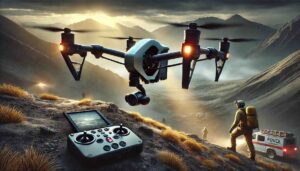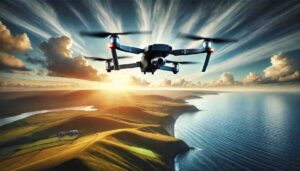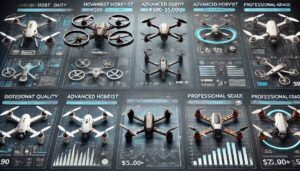Flying a multirotor drone can be one of the most exciting and rewarding hobbies out there. Whether you’re capturing stunning aerial shots, racing with friends, or using your drone for professional work, there’s a special thrill in commanding the skies. But let’s face it—things don’t always go smoothly. Motors stall, GPS glitches, or your drone decides to take a detour all on its own. Sound familiar?
Don’t worry. Drone issues happen to the best of us, and most of the time, they’re fixable with a little troubleshooting. In this blog, we’ll dive into some of the most common problems multirotor drone owners face, how to troubleshoot them, and tips to keep your drone flying high.
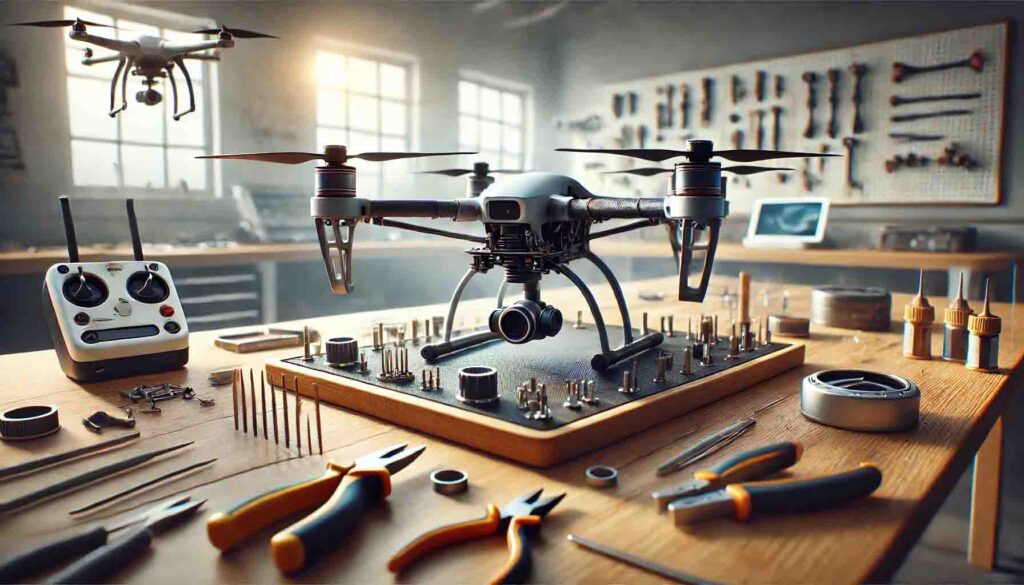
Motor Issues
The motors are the beating heart of your drone. If they’re not working properly, you’re not getting off the ground.
Common Problems
Motor Won’t Spin: One or more motors refuse to spin when you power up.
Uneven Speeds: Motors spin at different speeds, causing instability or failure to lift off.
Overheating: Motors get too hot after a short flight.
Troubleshooting Steps:
Check Connections: Ensure motor wires are securely connected to the ESC (Electronic Speed Controller).
Inspect for Obstructions: Look for debris, dirt, or hair tangled in the motor or propeller.
Test the ESC: Use a multimeter or swap the ESC with a working one to rule out a faulty controller.
Calibrate Your ESCs: Many drones allow you to recalibrate ESCs through the controller or software.
Replace Damaged Motors: If a motor feels stiff or won’t spin freely by hand, it may need replacing.
Pro Tip: Regularly clean motors, especially after flying in dusty or wet conditions, to keep them in top shape.
GPS Problems
GPS is essential for navigation, stability, and advanced features like waypoint missions or return-to-home. When it acts up, flying becomes tricky—and potentially dangerous.
Common Problems:
No GPS Signal: The drone can’t find any satellites.
Weak Signal: The GPS works but is unreliable.
Drift: The drone struggles to hold its position, even in GPS mode.
Troubleshooting Steps:
Check the GPS Module: Ensure the GPS antenna is properly connected and not damaged. Sometimes the antenna extension is damaged and you may not realize it by visual inspection. Use a multimeter to check the connection.
Fly in Open Areas: Avoid areas with tall buildings, dense trees, or electromagnetic interference.
Wait for Signal: Allow the drone a few minutes to acquire a strong satellite lock before takeoff.
Update Firmware: Make sure your drone’s firmware is up to date, as updates often fix GPS bugs.
Calibrate the Compass: Compass errors can affect GPS performance, so recalibrate it regularly.
Pro Tip: Avoid flying near large metal structures or power lines, as they can interfere with GPS signals.
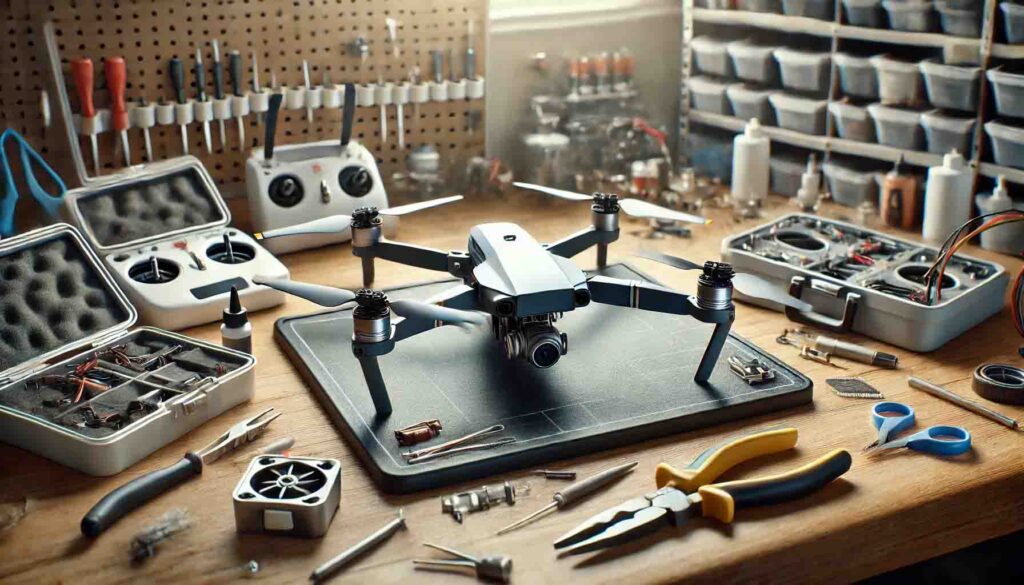
Battery Problems
Nothing grounds a drone faster than a battery issue. Whether it’s short flight times or sudden power loss, battery troubles can ruin your flying experience.
Common Problems:
Short Flight Time: The battery drains faster than expected.
Won’t Charge: The battery doesn’t charge or charges very slowly.
Swelling: The battery appears bloated, a common sign of damage.
Troubleshooting Steps:
Inspect the Battery: Look for physical damage, swelling, or leaking. Damaged batteries should be replaced immediately.
Check the Charger: Ensure you’re using the correct charger for your battery type and that it’s functioning properly.
Store Batteries Correctly: Keep them in a cool, dry place and avoid leaving them fully charged for extended periods.
Balance Charge: Use a balance charger for LiPo batteries to ensure all cells charge evenly.
Upgrade Batteries: If short flight times persist, consider upgrading to higher-capacity batteries.
Battery Life Time: If you have been using the battery for a long time, it may have reached its end of life. Consider replacing it with a new one.
Pro Tip: Always land with at least 20% battery remaining to avoid over-discharging, which can damage the battery. Also, batteries drain faster when they are at low voltage.
Connectivity Issues
Connectivity problems between your drone and controller can lead to frustrating interruptions or, worse, loss of control.
Common Problems:
No Connection: The controller won’t connect to the drone.
Signal Loss: The connection drops mid-flight.
Interference: Nearby devices or structures disrupt the signal.
Troubleshooting Steps:
Rebind the Controller: Follow your drone’s manual to re-pair the controller and drone.
Check Antennas: Ensure antennas are intact, correctly positioned, and free of damage.
Update Firmware: Keeping both the drone and controller updated can resolve compatibility issues.
Fly in Clear Areas: Avoid flying near Wi-Fi networks, cell towers, or other drones to minimize interference.
Test in Line of Sight: Always maintain a clear line of sight to your drone for the strongest signal.
Pro Tip: Use a signal booster if you regularly fly in areas with weak connectivity or interference.
Camera or Gimbal Problems
If your drone’s camera or gimbal isn’t working, you’re missing out on one of the best parts of flying: capturing stunning footage.
Common Problems:
Camera Won’t Start: The camera won’t turn on or connect to the app.
Shaky Footage: The gimbal doesn’t stabilize properly.
Tilted Horizon: The camera appears tilted, even on flat surfaces.
Troubleshooting Steps:
Check Gimbal Connections: Ensure the gimbal is securely connected to the drone.
Calibrate the Gimbal: Most drones allow you to recalibrate the gimbal through the controller or app. The gimbal may also come with its own software.
Update Firmware: Outdated gimbal or camera firmware can cause performance issues.
Inspect for Damage: Look for cracks, loose components, or worn-out dampeners.
Reset to Default: If all else fails, reset your camera settings to default.
Pro Tip: Use a gimbal guard during transport to prevent accidental damage. Some gimbal models have a quick release mechanism to remove the gimbal for transportation and install it before flight.
Flight Stability Issues
If your drone wobbles, drifts, or feels uncontrollable, it’s time to dig into the settings and hardware.
Common Problems:
Wobbling: The drone shakes or vibrates mid-flight.
Drifting: It drifts in one direction despite GPS or manual corrections.
Unresponsiveness: Controls feel sluggish or inconsistent.
Troubleshooting Steps:
Calibrate the IMU and Compass: These sensors are critical for stability and should be recalibrated regularly.
Inspect Propellers: Bent or damaged propellers can cause wobbling or drifting.
Check Weight Distribution: Ensure any payloads are evenly distributed.
Test in Calm Weather: Wind can amplify stability issues, so troubleshoot on a calm day.
Update Firmware: Updates often include improvements to flight stability.
Pro Tip: Always fly with fresh propellers—small nicks or imbalances can make a big difference.
Overview Table: Troubleshooting Common Drone Issues
Problem | Symptoms | Troubleshooting Steps |
Motor Issues | Motor won’t spin, uneven speeds, overheating. | Check connections, inspect for debris, calibrate ESCs, replace damaged motors. |
GPS Problems | No/weak signal, drift during flight. | Check GPS module, fly in open areas, calibrate compass, update firmware. |
Battery Problems | Short flight times, won’t charge, swelling. | Inspect batteries, check charger, balance charge, upgrade to higher capacity, obtain a new unit. |
Connectivity Issues | No connection, signal loss, interference. | Rebind controller, check antennas, update firmware, fly in clear areas. |
Camera/Gimbal Problems | Shaky footage, tilted horizon, unresponsive camera. | Check connections, recalibrate gimbal, inspect for damage, update firmware. |
Flight Stability Issues | Wobbling, drifting, sluggish controls. | Calibrate IMU/compass, inspect propellers, balance payload, fly in calm weather. |
Let’s Hear From You!
What’s the most frustrating drone issue you’ve faced, and how did you fix it? Are there any troubleshooting tips or tricks that have saved your drone from disaster? Share your experiences and questions in the comments below—we’d love to hear how you keep your drone flying smoothly!

